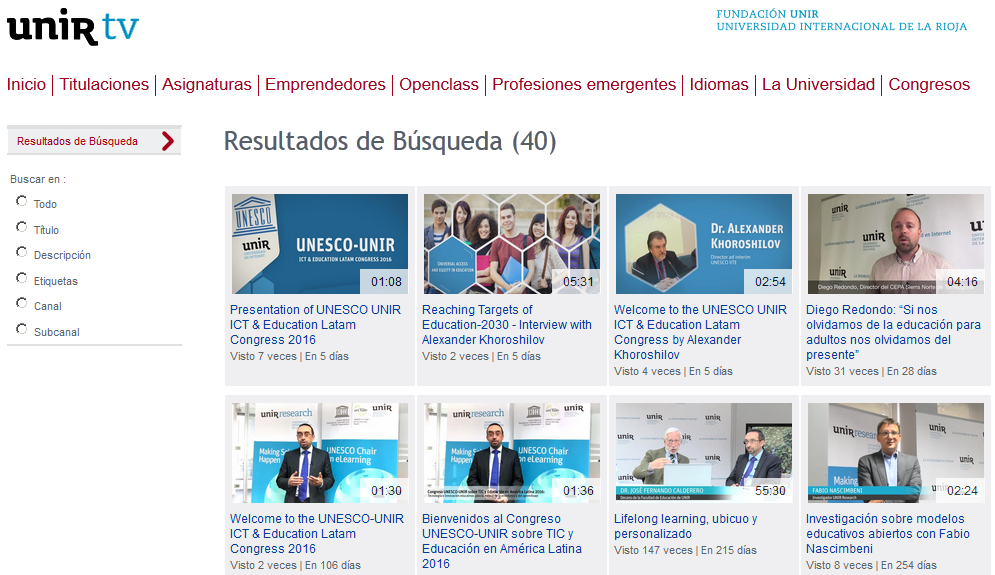Open video lessons and aditional materials in UNIR TV

At UNIR, we have developed UNIR TV (http://tv.unir.net), which provides videocast resources. For example: lessons, lectures, insights, presentations, and open classes… But not only, we are incluiding science dissemination pieces, interviews with teachers and reesearchers and a variety of content that provides valuable content for students.
UNIR TV is structured in three layers. Layer 1, open to everyone, meaning a 20% of the resources. Layer 2, open to free-registered users, meaning another 20% of resources. Layer 3, open to every single enrolled student at the university, bundling the other 60% of the resources.
In doing so, UNIR finds the balance between open and proprietary access, which is a must for a private, non-officially-funded institution. This strategy facilitates a rich and diverse access to open and general public, outside researchers and teachers, and accredited researchers at UNIR Research, the research department at the university.

Daniel Burgos, Vicechancellor for Research and Technology (UNIR Research, //research.unir.net) has stated that “If we combine Quality content and a good Methodology, OERs can feed for learning in an effective way, which is also commonly accepted and, de facto, approved amongst the communities and the main stakeholders in this evolving setting”.
Educational materials
In UNIR TV students can find a variety of resources in order to improve their knowledge and skills in whatever field of their interest. For example, between the most popular materials we have lessons about Foreing Languages, Education and Technology or Pedagogical Innovation. But, a wide range of materials are also included from areas of knowledge such as: Law, Social Sciences, Health, Mathematics, or Business.
Science dissemination
Furthermore, the Science Dissemination Unit are providing a number of videos from its own production. This pieces deal with the activity of our research projects, international partners, our presence on science congress and, above all, with the research outcomes from our researchers.
The channel is representing an opportunnity for students and scholars to know better the goals achieved by our researchers, the practical application of their knowledge and the social impact generated by them. Also, it is a good hub for new audiences because an important percentage of the videos are produced in English.
Innovation with video
Finally, an increasing number of teachers are collaborating with the Audiovisual Department to create more innovative materials. They are working using the journalism genres and cinema techniques as tools and inspiration to achieve materials more attractive for the entire academic community and general public.
Reports, news, interviews, and practical lessons with real students are being recorded each week. All this work provides a motivation for other teachers who wants to improve their teaching, make more engaging lessons, and use their own materials in the virtual campus.
For these reasons, UNIR TV is becaming a reference for our learners who use it as a powerful tool to search materials, to clarify their doubts, reinforce their knowledge, open new ways to creativity and to have a more direct relationship with the academic staff.
